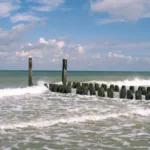A sailboat halyard rope is a rope that pulls the sail up the mast. There are many different types of halyard rope.
When choosing the right halyard for your sailboat, consider such factors as stretch, cost, weight, and ease of handling. Most cruising boats use polyester double braid for their halyards.
Size
A sailboat halyard rope is a line that pulls the sail up the mast. It may be as simple as 20 feet of 5mm line on a small dinghy or 80 feet of high-tech double-braid rope on a large performance boat.
The size of your halyard line is a critical factor in the performance of your sails and your running gear. It is also essential for the safety of your boat and its crew.
The size of the halyard rope depends on several factors including its length, the size of the sheave that it runs through, and the amount of load it must carry. It is best to buy a halyard that is a few meters longer than required.
Material
As sailboat halyards spend their lives bent around the mast sheave, their durability is important. They should be resistant to abrasion, and have good UV resistance.
As a result, some of the highest-end sailboats opt for halyards made from Dyneema, a high-tech material that is lightweight and strong. Its low stretch characteristics are especially beneficial for cruising sailors and regatta competitors who race regularly.
The halyard rope’s breaking strength and elongation are also critical. If a line is not strong enough to hold the weight of the sail, it will break easily and may be a serious issue for racing sailors.
Strength
When choosing the right sailboat halyard rope, one important consideration is strength. The line must be strong enough to withstand loads that may not be evident to the sailor.
It also needs to be durable and able to withstand prolonged periods of use without chafing, stretching or deteriorating. Ropes should have good tensile strength and resistance to UV deterioration, which can degrade fibers over time.
A well-made, high-performance rigging rope with a strong break load should be used on mainsail halyards to ensure they have the strength to carry the maximum amount of weight without straining. Likewise, if you plan to race in Grand Prix sailing, a stretch-resistant line should be used on spinnaker sheets and halyards to help transfer wind velocity without losing speed during fast races.
Durability
The halyard rope is a critical part of the rigging system. It hoists and lowers the sails.
The rigging must be measured and cut correctly to ensure the sheets, halyards, and control lines can work properly. The length of the rope is also an important consideration.
The halyards will be bending around the sheave at the masthead for an extended period of time and therefore must have a high level of durability. A halyard rope must be able to resist abrasion, water absorption, and UV light without wearing down too quickly or breaking.
Maintenance
Keeping the halyard rope in good condition is essential for your boat to sail safely and efficiently. It should be washed regularly and sheltered from the sun whenever possible to prevent UV rays and other environmental factors from damaging it.
It is also advisable to carry out small maintenance jobs when necessary to prevent the strands from fraying or unraveling. This is especially important when the rope is installed in running rigging or at anchor, where the end of the rope can become exposed to the weather conditions and the UV rays of the sun.
One way to clean your halyard rope is to attach a “messenger line” at the end of each halyard and then pull the halyard by the tail and wash it in a bucket. You can also use a commercial washing machine if you have the money to spare.






Comments closed.